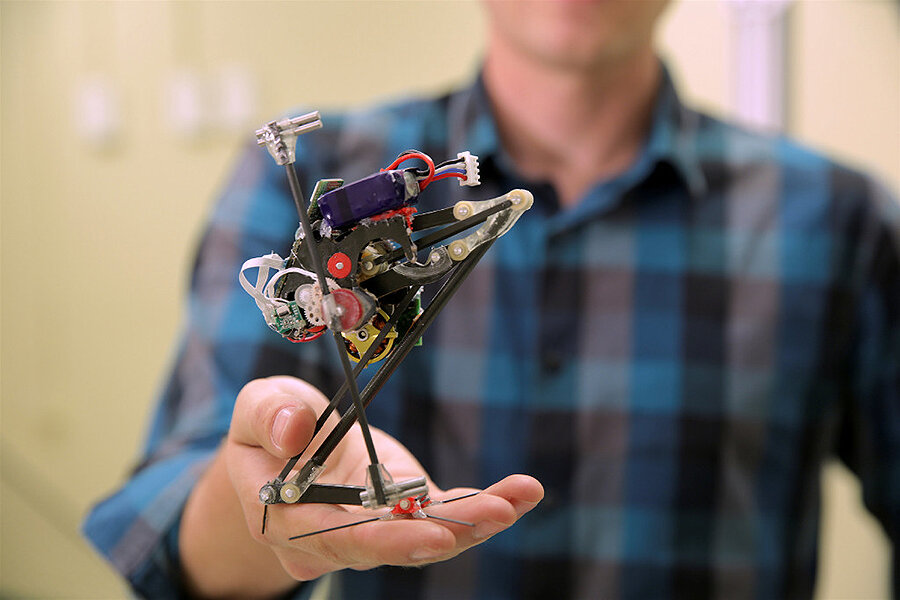How African bush babies inspired world's most agile jumping robot
Loading...
Researchers from the University of California, Berkeley, have created a new kind of leaping robot. The small machine, named Salto, has the ability to make several jumps in quick succession, making it the most agile jumper in the world of robotics – and perhaps one day, a light, lithe device to search disaster areas for survivors.
The design of Salto, which stands for Saltatorial Locomotion on Terrain Obstacles, is based on biology. To figure out how to create the agile robot, the researchers studied the galago, sometimes referred to as a bush baby. These big-eyed, small African primates are known for their remarkable jumping abilities.
By looking to blueprints found in nature, scientists are frequently able to create remarkable new pieces of technology, from robots that slither like snakes to warmer wetsuits based on otter fur. But for these researchers, this technological leap has led to more than a few literal jumps as well.
"Our goal was to have a search-and-rescue robot small enough to not disturb the rubble further, and move quickly across the many kinds of rubble produced by collapsed buildings," Duncan Haldane, a robotics Ph.D. student and study leader, told reporters in a news conference on Monday. "To do that, it has to be able to jump – and jump more adeptly – than prior robots."
To find a real-life inspiration for their robot, the scientists created a new metric to figure out which animal would be able to best fit these needs. The scientists searched for vertical jumping agility, which they defined as the height that an animal can reach with one jump in normal gravity, multiplied by how frequently it can jump.
Scientists settled on the galago, a small, big-eyed primate that stands between about 5 and 8 inches tall and weigh only 0.15 to 0.70 pounds. Despite its small size, the galago can sometimes leap more than eight feet from one point to the next, stringing a long series of jumps over difficult terrain. They found that the animal's vertical jumping agility was an impressive 2.24 meters per second, an ideal template for their design.
According to the researchers' study, published in the journal Science Robotics, robots have traditionally been able to do no better than 55 percent of the galago's impressive vertical jumping ability, from a resting start. But with Salto, the scientists were able to create a robot with a vertical jumping ability of 1.75 meters per second,78 percent of that of the galago.
The key to Salto's success is its special leg mechanism that imitates a galago's crouch prior to jumping. In the primate, the crouch transfers a large amount of energy from its muscles into its tendons before it jumps in a very short period of time. Similarly, Salto has a motor that drives its springs into a crouch, storing energy. Then, the robot is able to jump quickly in the air, and does not need to wind up for a second jump, unlike other robots. This allows it to make impressive subsequent jumps like the galago, and even allows it to jump from the ground and off a wall in quick succession.
While other robots are able to jump higher than Salto, none of them match the vertical agility of the small, nature-inspired robot. Researchers hope to one day be able to scan a region and program Salto to leap across terrain that would otherwise be impassable for rescuers.
"By combining biologically inspired design principles with improved engineering technology, matching the agile performance of animals may not be that far off," Ronald Fearing, a professor of electrical engineering and computer sciences at UC Berkely, said in a university press release.
This article contains material from Reuters.








